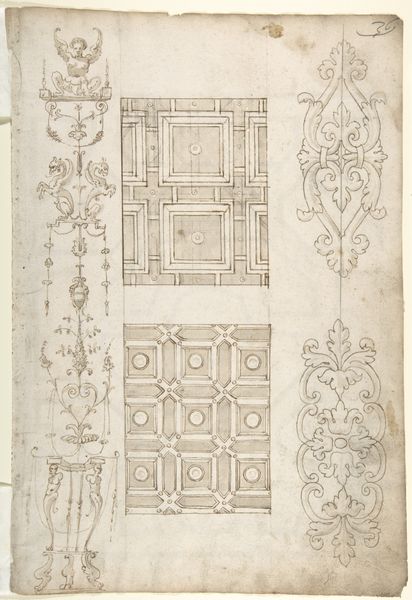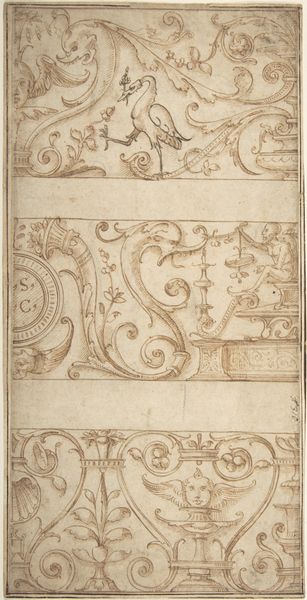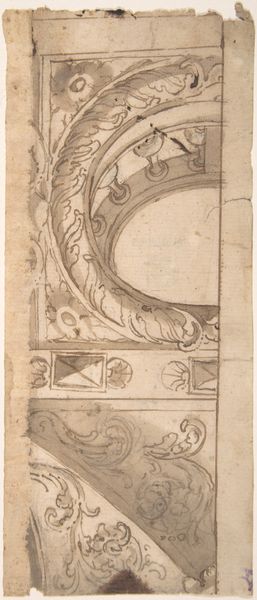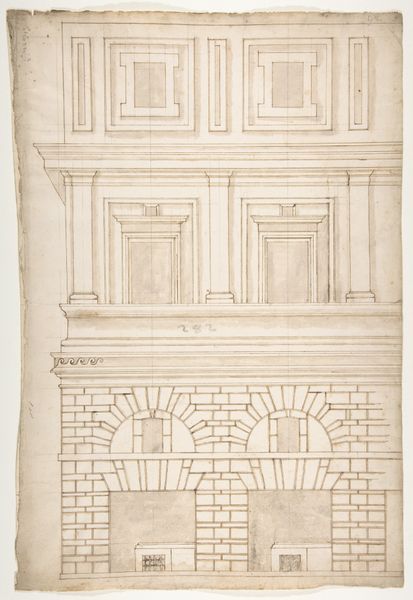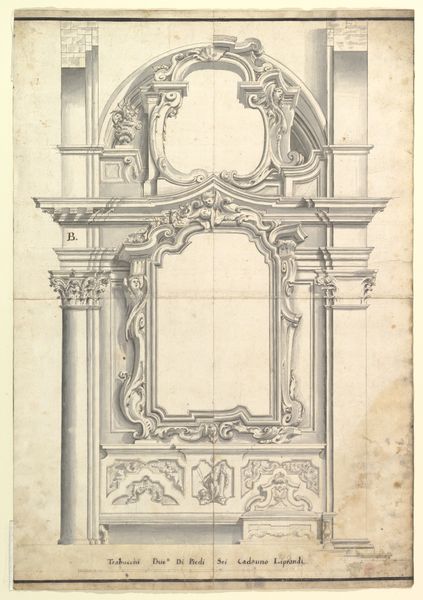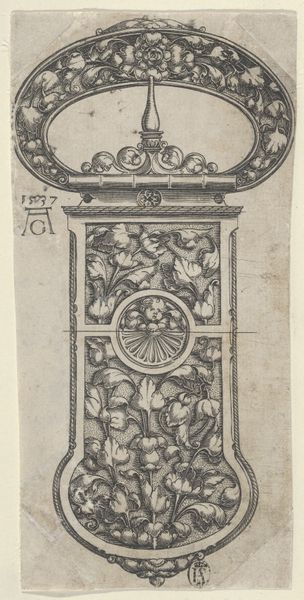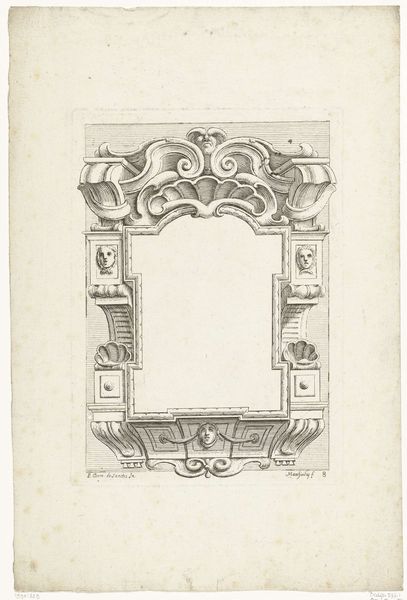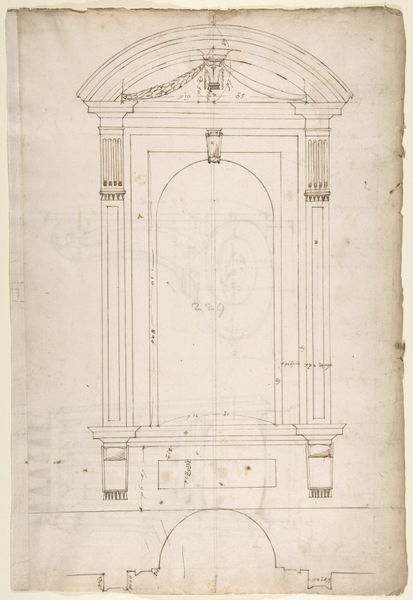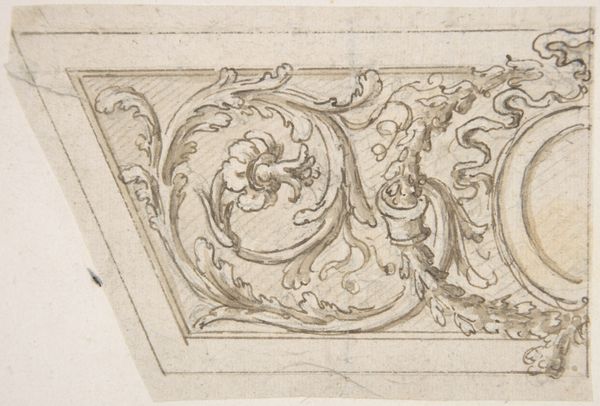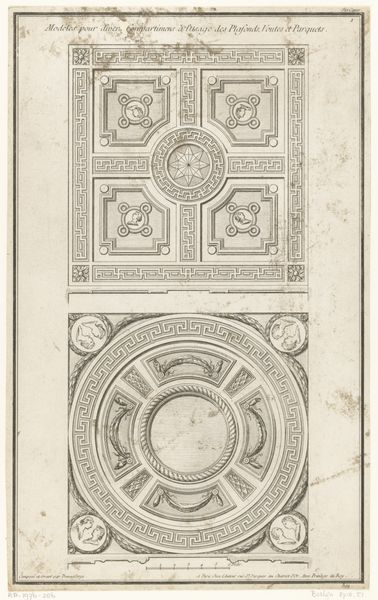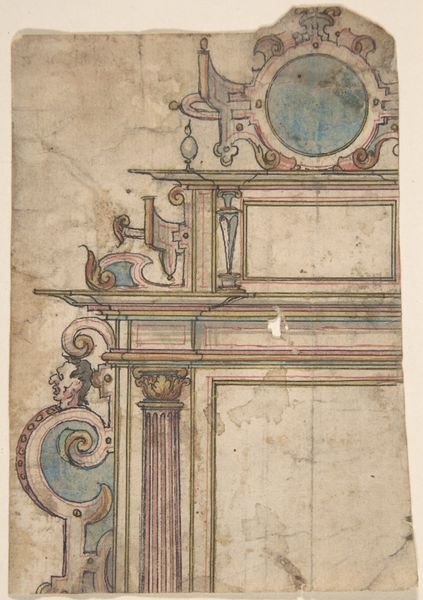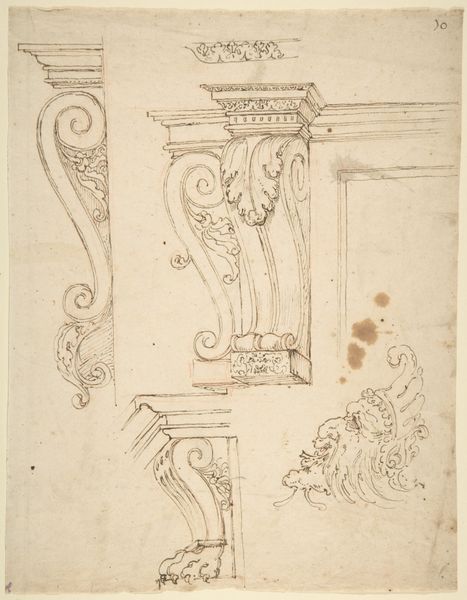
Design for an Octagonal Table and Top (Recto); Design for altar or tomb monument (Verso) 1530 - 1560
0:00
0:00
drawing, print, etching
#
drawing
#
table
# print
#
etching
#
etching
#
form
#
11_renaissance
#
line
#
italian-renaissance
Dimensions: Overall: 16 1/8 x 10 3/4 in. (41 x 27.3 cm)
Copyright: Public Domain
Curator: This intriguing design drawing, whose creator remains anonymous, is believed to have been produced between 1530 and 1560. It features designs for both an octagonal table top and an altar or tomb monument on the reverse side. The piece employs etching techniques, printed in lines. Editor: It strikes me as oddly captivating. There's this elaborate geometry on top met by such animalistic brutality down below, like some surrealist puzzle in pre-industrial society. Curator: It’s fascinating to consider the table as a utilitarian object elevated by this incredibly ornate design. The production process involved etching, meaning that a metal plate would have been treated with acid to create the design, then inked and pressed onto paper. The back design makes one consider the social context in which domestic furnishings take on an architectural relevance related to funerary design. Editor: I see the animalistic supports of the table and that flips a switch in my mind, calling me to ponder questions about hierarchies of power, where wealth displays domination and this table—whether used in a wealthy home, or not—plays to cultural standards, perhaps speaking to gendered societal expectations of men as heads of household, perhaps of trade and the resources gleaned abroad, too. Curator: Precisely. And examining the materials and the implied labor also breaks down traditional hierarchies within the art world itself. Etching allowed for the relatively easy reproduction of images, expanding access and potentially blurring the lines between "high art" and more accessible decorative arts. This also made artistic knowledge more distributable. Editor: That's an important point, because so many hands shape an aesthetic. And you have to think about who had access to those skills and materials...was artmaking more possible in religious orders? To look at process then makes me consider how art functions as commodity, tied to the development of trade networks, the availability of materials, labor practices, and class structures— Curator: Absolutely. It reminds us that even a design drawing is a product of a complex web of social and economic relationships, reflecting and shaping the values of its time. Editor: Thinking of those hands, then the tomb element…the function, production, aesthetic value: what can be elevated and kept and for whom. It gives me a better idea of some lasting intentions through art, which otherwise could remain buried.
Comments
No comments
Be the first to comment and join the conversation on the ultimate creative platform.
